Fun(ctional?): In The Future Rovables Will Dress You
LifestyleNewsTechWellness February 9, 2025 Damon Mitchell
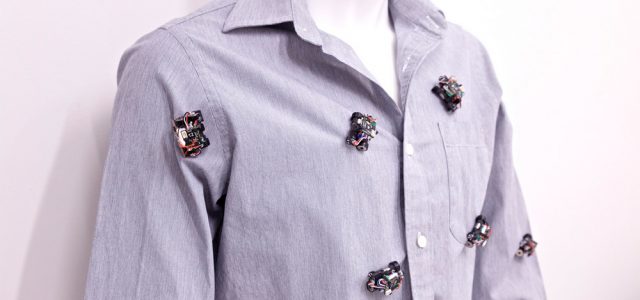
Funded by the National Institute of Biomedical Imaging, Engineers from MIT and Stanford recently announced wearable robots they are calling rovables, which can perform a few tricks on your clothes. They may one day do so much more.

(Source: mememaker.net)
While at first, these little bots sound like nothing more than a bunch of parlor room antics, after consideration they may something more.
The first generation isn’t much to look at, but with refinements, they could be the equivalent of external nanobots.
Okay, you know how Ironman used to have to climb into his suit, but now it can assemble itself on his body?
What if little robots on our clothing could help us get dressed or perform other clothing level tasks? For the disabled, the value is priceless.
With a few DARPA-like revisions, rovables could be the next awesome thing to happen to wearables.
We’re gonna look at not only how they work, but how they could work in the future, what they could facilitate, but also how they could change our lives.
Roving Around
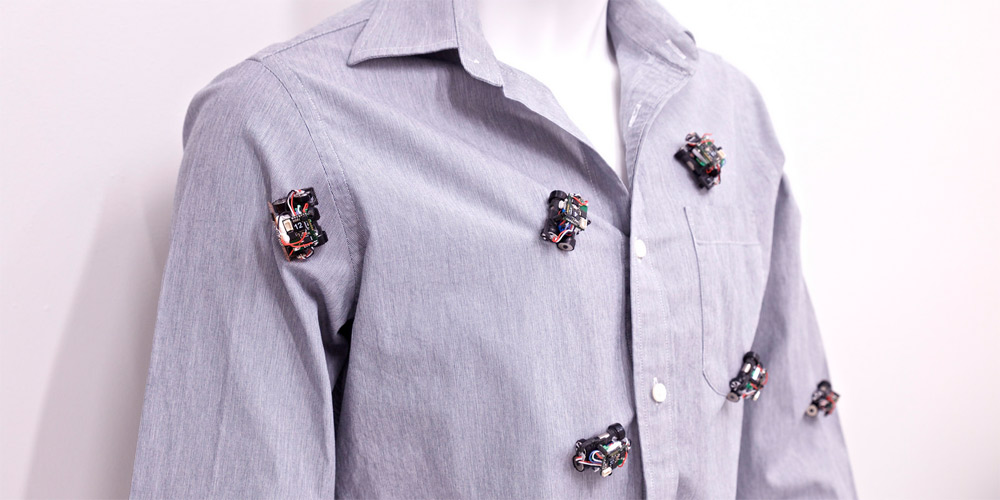
(Source: aec.at)
The current lot of rovables are cute, but a little clunky. Imagine one of those racetrack cars that kids used to race around the grooved track… Remove the shell and voila! You basically have a rovable.
The magnetized wheels of rovables attach to other magnetic wheels on the opposite side of the fabric. (We have to wonder how they fair with hairy chest manly men?)
This engineering, combined with some low-level artificial intelligence allows them to scale any clothing.
So far they only do cute things, like drag scarves into place or come together to form a light-up nametag. With development, they could be smaller, taught to perform more intricate tasks.
Using wheels to navigate is a simple solution, but they have to be small enough that they aren’t a nuisance.
Unless (ooh!) unless they can engineer a drone to collect the little guys. Then that would be awesome.
Connecting Up
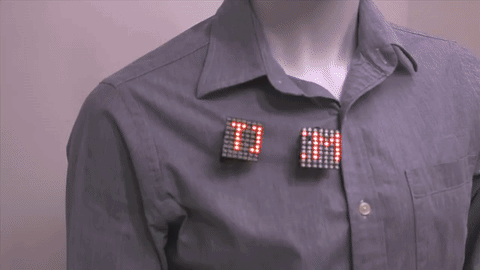
(Source: aec.at)
The current rovables already work together, communicating with your smartphone to make cute little light-up signs.
In the future, they could network with other wearables. Your fitness wearable, detecting that your body temperature has dropped, might signal your rovables to zip up the vents on your jacket until your temperature returns to an acceptable range.
Or, get enough of them together, they could detect that you’ve collapsed someplace unsafe, moving you to safety.
They could link together to form pressure on a sprained ankle so a runner could finish a marathon.
Changing Life
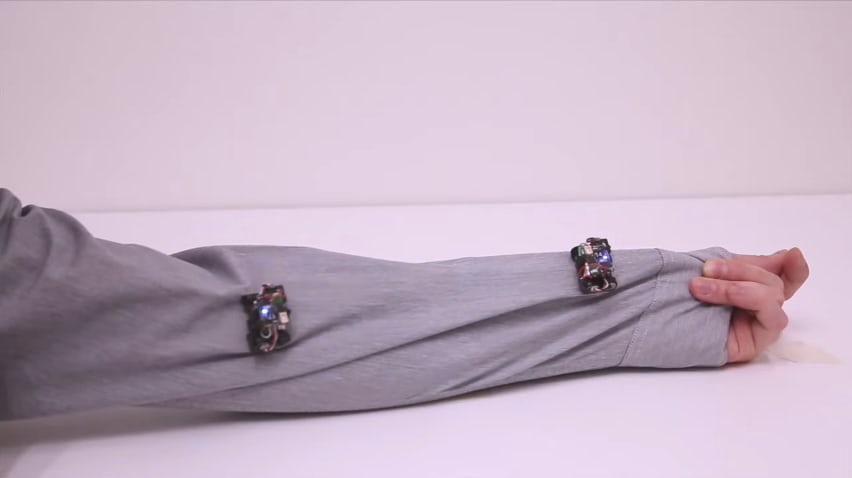
(Source: newatlas.com)
For disabled people, rovables could reconnect them to the world in new ways. They could help the disabled get dressed, change bandages, and move around, even stand up.
It sounds like science fiction, but we’re only a few versions away from rovables that could come together to form an exoskeleton.
Imagine movables that restore ambulation to a paraplegic?
Rather than stay strapped into a large exoskeleton all day, paraplegics could wear rovables that recede into his clothing when he wants to sit down. They could even stabilize his abdomen.
In space, they could help astronauts make suit adjustments, as the suit itself and the gloves they wear make dexterity difficult.
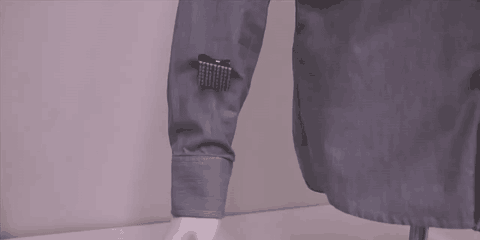
(Source: inverse.com)
The current army of rovables last 45 minutes on one charge, so we are once again up against the wall of power.
Someone is going to crack this thing open, and when they do all our science fiction dreams will come to fruition. Once we have super powerful tiny batteries, there will be no stopping us from taking over the world.
Meanwhile, we can all dream of someday being Iron Man.